Are you looking for a dog yeast infection home remedy? Skin yeast infections are a common occurrence in canines. Because of the frequency of yeast infections worldwide, there are several home remedies to help owners get their dogs back in top shape. Pet owners often become worried about their dog's healthy skin. Apple cider vinegar, coconut oil, and oregano oil are great remedies for yeast infections in a dog.
Yeast infections are a sign that your dog's immune system is not functioning at 100% or that your dog isn't on a regular cleaning and grooming schedule. In some cases, a yeast infection can be a sign of more serious health issues in your dog. Broad Spectrum CBD Oil for Dogs may help support your dog’s overall wellness, but please see a veterinarian if your dog’s yeast infection appears severe.
What is a Dog Yeast Infection?
The body should be able to regulate yeast itself. Yeast naturally and healthily lives on your dog's skin. Issues arise when the fungi overpopulate. Before we dive into home remedies for yeast infections in dogs, let's touch on what a yeast infection is and its cause.
If your dog has itchy, irritated skin that has a foul odor, it could be suffering from a yeast infection. A dog skin yeast infection can cause you to stress as a pet owner. These yeast infections can relate to other medical issues, such as allergies. A yeast infection is a fungus called Malassezia pachydermatis.
While yeast itself is typical, yeast overgrowth can cause issues. Depending on the fungal infection, there are usually different ways for dog owners to treat it. While yeast is normally found in the skin folds, dog's ears, and mucocutaneous areas, yeast overgrowth can lead to dermatitis, which is the inflammation of the dog's skin. Yeast dermatitis is very common in dogs. Yeast infections thrive in hot, humid environments. In that situation, the yeast proliferates, causing overpopulation.

Additional yeast infections or fungi can trespass into the bloodstream and create difficulties in the liver, eyes, lungs, brain, and bones. Valley fever, aspergillosis, blastomycosis, and cryptococcus are some of the most common fungi that can cause infection in your dog.
Types of Yeast Infections in Dogs
All yeast are fungi. Yeast lives on the bodies of dogs and humans. For the most part, these fungi are harmless. It's the overpopulation of fungi or yeast overgrowth that causes health issues. There are several types of fungal infections that may be affecting your dog. We mentioned that Malassezia pachydermatitis is the most common fungi, but candida infections also appear quite frequently. Types of yeast infections in dogs can vary.
Candida albicans is typically the cause of vaginal yeast infections in women. However, this particular type of skin yeast infection can affect your dog as well though. This yeast thrives in the vagina and vulva, on the foot and between toes, and in their floppy ears. Although a common skin yeast infection, it is not uncommon for Candida to populate the gastrointestinal tract as well.
Yeast infections can occur on your dog's paws, ears, skin, and nails. Dog paw and ear yeast infections are diagnosed the most and are not life-threatening.
Causes of Yeast Infections in Dogs
Yeast infections occur in different places depending on the infection. Yeast overgrowth often occurs in dog's ears. The ear canal of a dog is an “L" shape. It goes downward before changing direction and heading straight back.
Water and debris can easily get trapped in the ear canal of your dog due to its angle. Allergens like mold, dust, feathers, pollen, smoke, and certain foods can also lead to infections in a dog's ears.
Problems With Your Dog's Immune System
Normally, the fungi living on the skin of your dog are regulated by the immune system. A weakened immune system or a change in the condition of the skin of a dog can be the catalyst for yeast infection. Yeast is very opportunistic and will thrive on your dog once the environment allows them to proliferate. A yeast infection is not contagious, which means your dog cannot spread it.
Treating yeast infections won't cause any harm to you doing it at home. Immune system deficiency can result in chronic yeast infections. If your dog cannot properly regulate yeast, the fungi will begin to reproduce rapidly. A dog that receives immunosuppressive drugs, such as steroids, also has an increased chance of developing yeast infections.

Dog Allergies
Allergies are the most common cause of yeast infection in dogs. Allergies to fleas, inhalants, food, and contact allergies are the most common forms of hypersensitivities that affect dogs. Allergies can cause the skin to produce increased amounts of oils, which create an environment for yeast to build up. Because allergies are an easy ailment to resolve, a yeast infection caused by them is easy to treat.
Predisposed Dog Breeds
According to VCA Animal Hospitals, certain breeds are genetically predisposed to developing yeast infections. Australian Terrier, Basset Hound, Chihuahua, Cocker Spaniel, Dachshund, Lhasa Apso, Maltese Terrier, Poodle, Shetland Sheepdog, Silky Terrier, and West Highland White Terrier breeds are dogs that may develop yeast infections more commonly.
Other Causes
Cancer, hormonal disorders like Cushing's Disease or hypothyroidism, skin parasites, and chemotherapeutic drugs may also promote yeast infection. Dogs with skin folds, such as Bulldogs and Pugs, run an increased risk of getting yeast infections.
Symptoms of Skin Yeast Infection in Dogs
According to WebMD, the outer ear of a dog stretches from the outside of the earlobe to the eardrum. Ear infections in this area are known as otitis externa. Ear infections in the middle ear, or otitis media, usually occur in conjunction with an outer ear infection.
Inner ear infections will affect a dog's judgment of balance and position. An inner ear infection can also lead to deafness in your dog. If you believe that your dog has yeast dermatitis, you should treat infections as soon as possible to prevent itchy skin and improve your dog's health.

The most common symptoms of a skin infection are:
- Brown, yellow, or bloody discharge
- Itching and redness
- Crusted skin on the ear flap
- Scales and flaky skin in skin folds
- Hyperpigmentation (darkly pigmented skin) on dog's skin
- Loss of balance
- Walking in circles
- Ear mites
- Excessive licking or skin scraping
- Loss of hearing
- Odor
- Unusual eye movements
- Thickened skin
- Hair loss
- Excessive head shaking
If your dog suffers from any of these, you may need to be concerned. The above symptoms of skin yeast infections can occur between the paw pads and digits, on the nasal folds, anal area, neck, ears, and armpits of your dog. A dog with a yeast infection may rub their ears on furniture or attempt to use household items as tools to dig into their ear.
A greasy coat and rancid skin may also hint at a yeast infection. Often, when the yeast infection occurs in the ears, a yellowish-green moldy-smelling discharge is produced. Although extremely rare, yeast infection in a dog’s mouth can cause irregular drooling, oral distress, and trouble eating.
Prevention of Dog Skin Yeast Infections
Prevention is the key to keeping your dog's skin yeast infection-free. Treating yeast infections isn't a complicated process. Owners should regularly check their dog's paws, ears, nails, and skin for discharge, odor, irritation, and swelling. If you have a dog that enjoys swimming or playing in the water, tenderly dry the outer area of the ears thoroughly.
If your dog is hairy around its ear openings, get them trimmed regularly. Keeping the area around the ear clean and dry is key. Moist or dirty skin will allow yeast to grow uncontrollably. Bathing your dog regularly will also help prevent yeast infections and soothe the irritated skin.

We cannot preach the importance of Probiotics enough to help combat skin yeast infections. Probiotics are live microorganisms that can help improve your dog's overall health. The stronger the immune system, the less likely your dog will get a yeast infection.
Home Remedies for Dog Yeast Infections
Since yeast infections are fairly common in dogs, there are several home remedies to help ease the ailment. Natural remedies are often preferred over anything too invasive. Coconut oil, apple cider vinegar, kefir, and oregano oil all fight yeast infections. Owners should always use organic items on their dogs.
Please speak with your veterinarian before adding anything to your dog's diet. Although home remedies for treating a dog skin yeast infection offer a natural solution, we can't emphasize enough that they are not a replacement for prescription treatment. This is especially true if dog skin yeast infection symptoms are severe or do not get better.
Healthy Diet
A dog's diet can have a lot to do with yeast growth. Skin yeast infections almost always show a sign of a weakened immune system. Checking what's in your dog's food is a good place to start.
Everything from sweet potatoes to the amount of fatty acids in a dog diet is different amounts from different breeds. Everything from a dog's body weight to the beneficial bacteria it's getting in its gut can affect its immune system. Several dog breeds benefit from a cooked diet over a raw diet to help reduce pathogen risks. This also ensures that good bacteria to bad bacteria ratio stays in check. A healthy balance in your dog's food might be the simplest method you need.
Anti-fungal Shampoos
Antifungal shampoo (also written anti-fungal shampoos/rinse) can be one of the natural remedies pet owners can try. Its antifungal properties can help irritate a dog's skin. Antifungal shampoos can drastically cut down on the yeast population.
Make sure if you're using it at home, you use the proper dilution when applying any medication. When using antifungal shampoo, bathe your furry friend about twice a week. You must increase their routine bathing while infected to prevent a re-infection.

Coconut Oil
Coconut oil is a miracle product, and it's easy to understand why. It can help with several issues, including yeast infection. It is also completely safe for dogs. It contains antibacterial properties that fight against yeast infections.
Owners can mix coconut oil into their dog's diet to promote good health, but it can also be applied directly to the area of the yeast infection if it is exterior. Do not pour coconut oil into your dog's ear. A coconut oil rub on the affected skin can be repeated daily until you see results.
Apple Cider Vinegar
Apple cider vinegar is another product that holds high regard in the health community. A vinegar rinse is incredible at fighting infections of all kinds in humans and dogs. Owners can dilute apple cider vinegar in water (a 20/80 split works well) and apply it topically to the infected area of their dogs or where they see hair loss.
Add apple cider vinegar to food or water (although your dog won't enjoy the taste) to combat any internal germs linked to the original yeast infection. A vinegar rinse is a great choice to get rid of excess yeast on the inflamed skin if you have tried other methods.
Oregano Oil
Dogs may despise the taste and smell of oregano oil, but it will fight yeast infections. Owners should dilute oregano oil with olive oil and place the mixture in a capsule. The dilution depends on the size of your dog. For a big dog (50-70 lbs), dilute half a teaspoon of oregano oil with half a teaspoon of olive oil. For a medium-sized dog (25-35 lbs), use 1 teaspoon of olive oil instead, and for a small dog use, 1.5 to 2 teaspoons of olive oil. One capsule a day for your dog should do the trick.

Candida Killers
Customize any Candida-killing supplement devised for humans for your dog. First, an owner must know their dog's weight. Divide the human label dose by two for dogs weighing 50-70 lbs and the label dose by four for dogs weighing 25-35 lbs.
Kefir
Kefir is also a popular home remedy for yeast infections in dogs. Kefir is a combination of bacteria and yeast fermentation, much like yogurt. It is a probiotic used heavily in Europe and Asia to help sustain regular bowel movements, treat digestive ailments, and boost the immune system. Introduce Kefir into your dog's diet, and many pet stores sell it.
When To See The Vet
If the above methods do not quell your dogs yeast infection, please head to the veterinarian immediately. Veterinary medicine can be specific to your dog breed. Vets can prescribe medication tailored to your dog's lifestyle and identify a possible underlying cause. Your dog may have a more severe infection of a different kind.
It can be hard to tell just by looking at the affected area. Always consult your veterinarian before adding anything to your dog's diet or treating yeast dermatitis on your dog's skin by yourself.
Final Thoughts - Dog Yeast Infection Home Remedy
A yeast infection in dogs can be nasty, but a little work on your end should be able to clear things up. A dog's skin is a good indicator of its health. Since yeast infections are a sign that the immune system is not doing its job properly, owners should always encourage good health for their dogs. Adding probiotics and other products for dogs to your dog's diet, regular cleaning and grooming with the right products for dogs, and constant exercise will boost your furry friend's overall health and help keep your dog's skin healthy.
May pet parents decide to get ahead of the problem and use home remedies to help ease skin infections. Coconut oil and apple cider vinegar are the most popular home remedies for yeast infections in dogs. Still, other remedies for owners dealing with yeast infections in dogs exist. We understand that the health of your dog's skin is of the utmost concern. Dogs are an important part of our families.

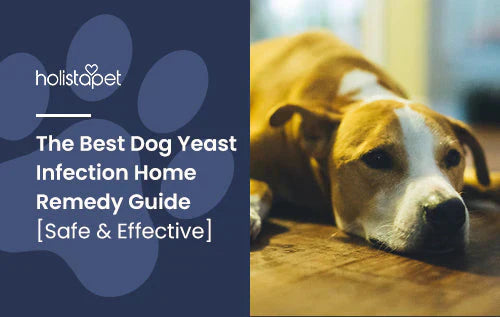
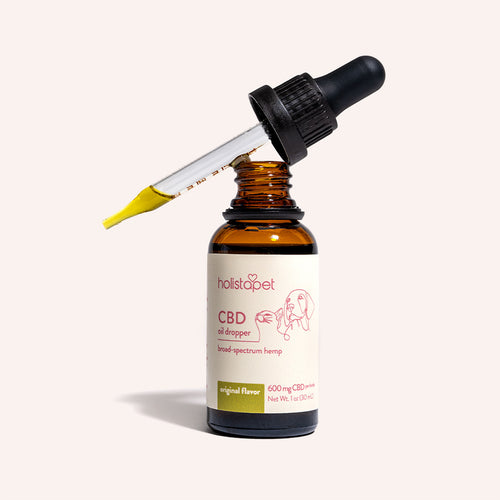 CBD Oil for Dogs - Fast Acting
CBD Oil for Dogs - Fast Acting
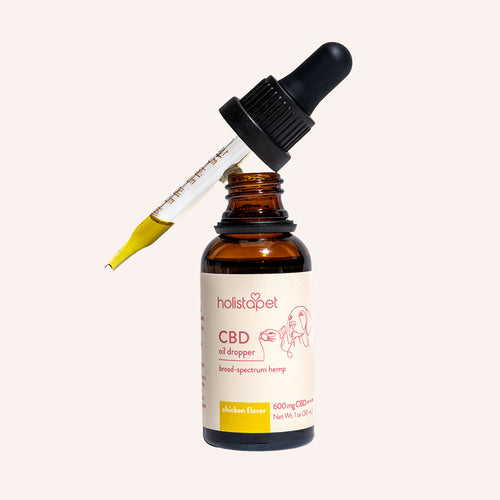 Chicken Flavored CBD Oil For Dogs - Easy Dose
Chicken Flavored CBD Oil For Dogs - Easy Dose
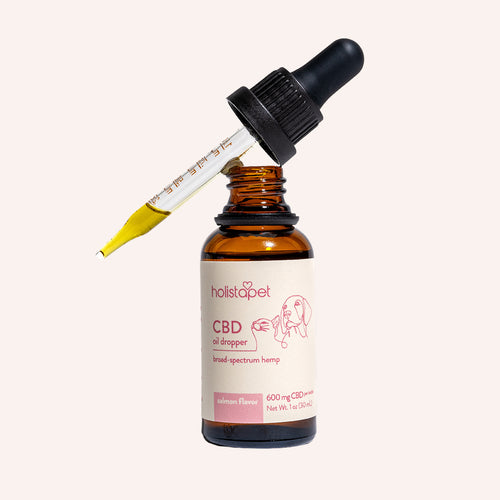 Salmon Flavored CBD Oil For Dogs - Highly Rated
Salmon Flavored CBD Oil For Dogs - Highly Rated
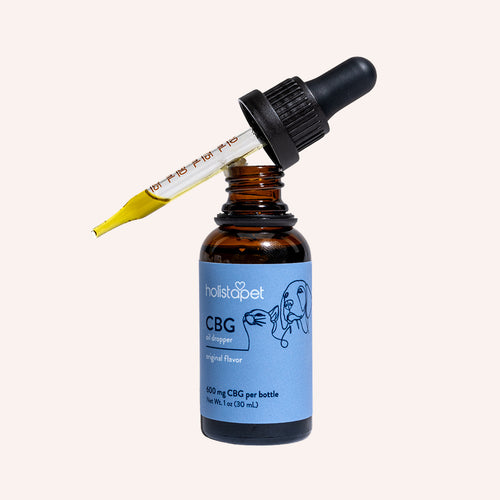 CBG Oil for Dogs and Cats - Loved by Thousands
CBG Oil for Dogs and Cats - Loved by Thousands




7 comments
Veronica
I have toy Fox terrier that has skin issues. We have had antibiotics, apoqiel, cytopont shots. A diet with duck, potatoes and carrots
He is still red
What can I do ?
Debra
My Chihuahua has yeast for a long while
Took her to vet , bought a very expensive shampoo , antibiotics did that like vet said, it came dack or didn’t fix it . When dack again more shampoo an pills
It’s to expensive to go to vet at a 100.00 a trips
I’ve try about every thing . Now giving her chews for gut
She has lost a lot of her hair!! She has elephant looking skin where she’s lost her hair an she smells sooo bad, has bark ear wax that smells awful as well
I’m afraid to rinse her in vinegar water because it probably will burn they said coconut oil was good I put it on her hairless parts she loves to eat it , but will the hurt her?
Oh an she will scratch an that brings off dead skin like stuff , I think I’ve covered all her troubles
Sorry this is so long but hopefully you can give me some information how to make her feel better.
Christina
You have to starve yeast for it to go away. Consider avoiding anything that is sugary/starchy like potatoes (sweet and regular), rice, oats, etc. Yeast thrives on food that turns to sugar.
Pamela Bowman
I have a mini schnauzer who has horrible allergies. She’s always licking her paws and I have to take her to have her ears cleaned by the vet. They have her on allergy medicine daily but I would like to get her off of it. I cook all of her food so she’s eating really well. Salmon lamb bison And venison are the proteins I feed her along with yams vegetables a little Kiefer yo and scrambled eggs but I am dying to try what you have suggested. I’ll give you an update in about four weeks thanks
Donna
I have a shihtzu with chronic dermatitis. I use both 1Cup apple cider vinegar in her bath water and after she’s dry I melt about Tbl spoon of cool Coconut oil and massage on her coat sparingly. This doesn’t cure her, however, she shows signs of comfort and relief for a few days. And, if I can recommend a good book The Forever Dog which has been a huge resource in animal care. Good luck. Donna B
Leave a comment
All comments are moderated before being published.
This site is protected by hCaptcha and the hCaptcha Privacy Policy and Terms of Service apply.